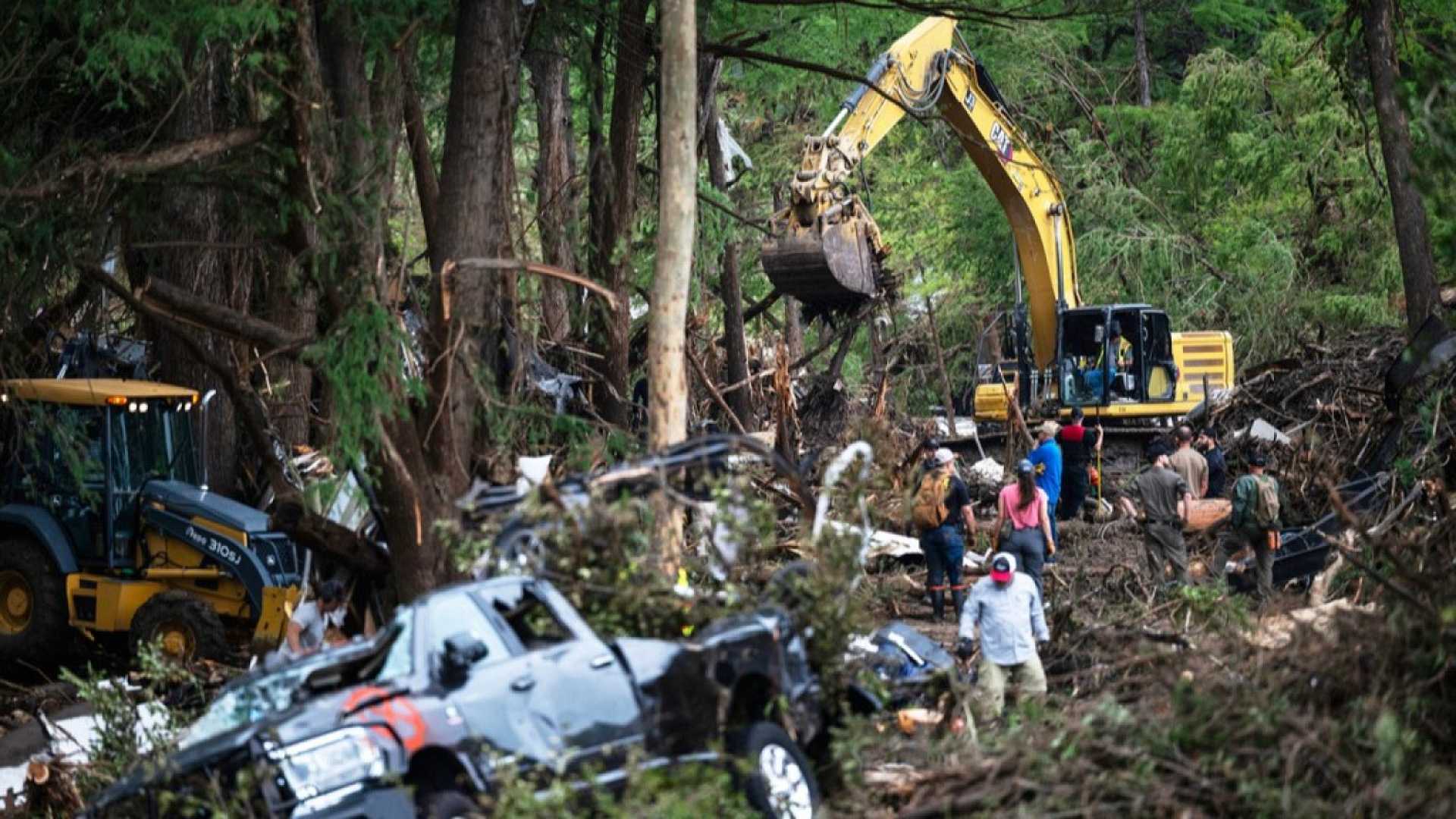News
Central Texas Flooding Claims Over 100 Lives, Rescue Efforts Ongoing

Hunt, Texas — A devastating flash flood swept through central Texas in the early hours of July 4, 2025, leading to the loss of over 100 lives, including many children at summer camps along the Guadalupe River. The torrential rains, which began overnight, resulted in catastrophic flooding as the river rose more than 20 feet in just two hours.
Residents and campers were caught off guard as storms wreaked havoc on neighborhoods, leaving entire areas submerged. As of Tuesday, search and rescue efforts continue, with rescuers working to locate missing individuals.
The National Weather Service had issued flood warnings for Kerr County as early as Thursday. However, the situation escalated rapidly when some places received up to 6.5 inches of rain in just three hours, marking a 1-in-100-year rainfall event for the region. The unusually dry soil struggled to absorb this sudden deluge, leading to increased flood risks.
Video footage captured the rapid rise of floodwaters along the Llano River in nearby Kingsland, Texas. The flooding drastically impacted local summer camps, with at least 12 camps sustaining significant damage, including Camp Mystic, where approximately 750 campers were present.
The extensive flooding damaged buildings, with reports indicating that floodwaters tore down walls and left cabins covered in debris. Tragically, 27 individuals, including campers and counselors from Camp Mystic, were confirmed dead, with another 11 still missing.
Despite the chaos, Camp La Junta, a boys’ camp nearby, reported that its staff and campers were safe and accounted for, as their property was fortunate enough to avoid -major flooding.
Local Judge Rob Kelly remarked on the unexpected severity of the floods. “We had no reason to believe that this was going to be anything like what’s happened here. None whatsoever,” he said.
The overnight flooding complicated response efforts as many residents were asleep when the storm struck. Authorities issued a series of flash flood warnings, culminating in a flash flood emergency declaration just before 5:34 a.m.
The storm’s aftermath highlights increased risks from extreme weather patterns in recent years. The current conditions in central Texas, characterized by drought and rapid rainfall, exemplify the growing concern about climate-related weather extremes.
As families desperately await news of their loved ones and communities begin to recover, the question remains: how can such a disaster be prevented in the future?












